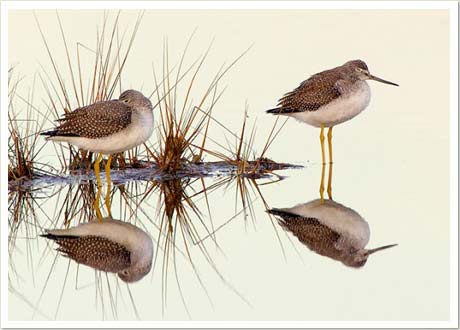|
| Greater Yellowlegs |
PHOTO: 1 2 |
 |
|
 |
 |
| Greater Yellowlegs are common in parts of Plymouth Beach during spring and fall migrations, preferring shallow marshes and mudflats. They feed by hunting small fish and invertebrates, frequently chasing down active prey with a distinctive "jaunty" gait. Greater Yellowlegs will linger into October and even November. A few will stop at the beach while moving northbound in May, but most are not seen again until mid-July. |
|
|